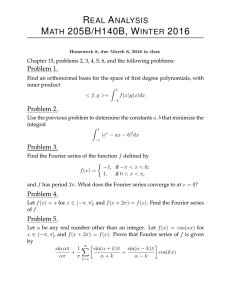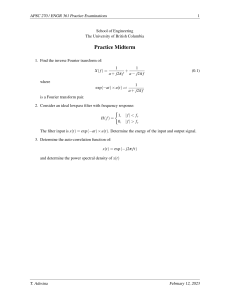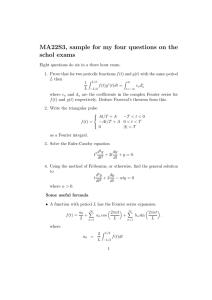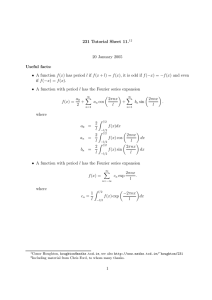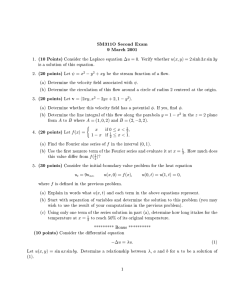PHZ 3113, Section 3924, Fall 2013, Homework 10
advertisement
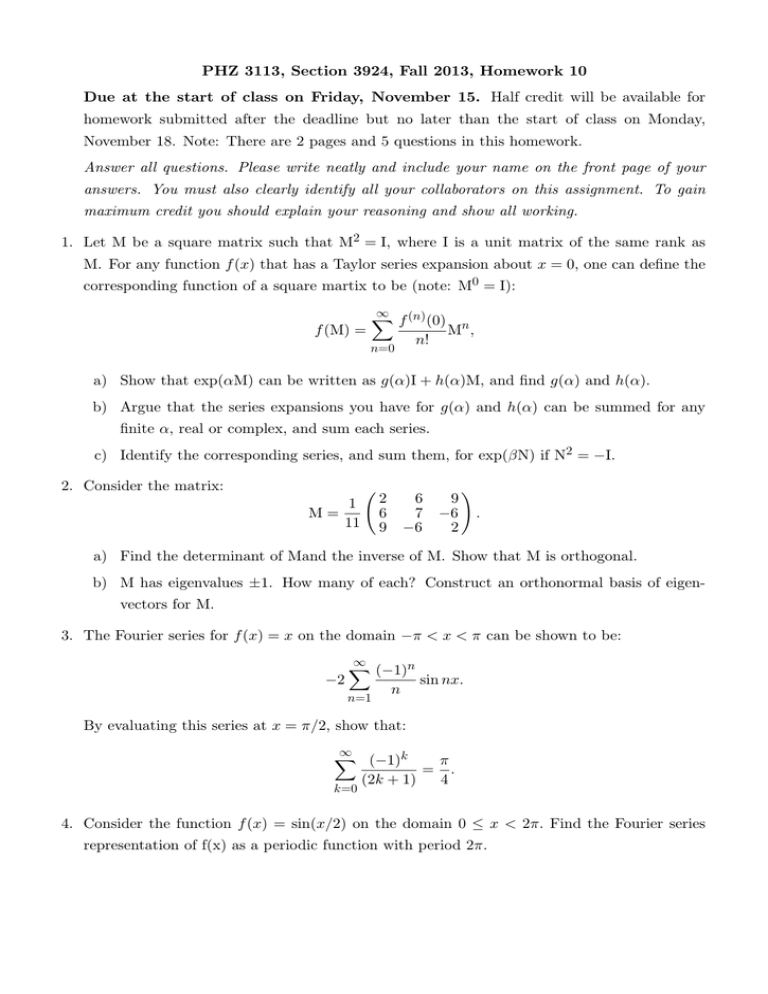
PHZ 3113, Section 3924, Fall 2013, Homework 10 Due at the start of class on Friday, November 15. Half credit will be available for homework submitted after the deadline but no later than the start of class on Monday, November 18. Note: There are 2 pages and 5 questions in this homework. Answer all questions. Please write neatly and include your name on the front page of your answers. You must also clearly identify all your collaborators on this assignment. To gain maximum credit you should explain your reasoning and show all working. 1. Let M be a square matrix such that M2 = I, where I is a unit matrix of the same rank as M. For any function f (x) that has a Taylor series expansion about x = 0, one can define the corresponding function of a square martix to be (note: M0 = I): f (M) = ∞ (n) ∑ f (0) n M , n! n=0 a) Show that exp(αM) can be written as g(α)I + h(α)M, and find g(α) and h(α). b) Argue that the series expansions you have for g(α) and h(α) can be summed for any finite α, real or complex, and sum each series. c) Identify the corresponding series, and sum them, for exp(βN) if N2 = −I. 2. Consider the matrix: 1 M= 11 ( 2 6 9 6 7 −6 9 −6 2 ) . a) Find the determinant of Mand the inverse of M. Show that M is orthogonal. b) M has eigenvalues ±1. How many of each? Construct an orthonormal basis of eigenvectors for M. 3. The Fourier series for f (x) = x on the domain −π < x < π can be shown to be: −2 ∞ ∑ (−1)n sin nx. n n=1 By evaluating this series at x = π/2, show that: ∞ ∑ π (−1)k = . (2k + 1) 4 k=0 4. Consider the function f (x) = sin(x/2) on the domain 0 ≤ x < 2π. Find the Fourier series representation of f(x) as a periodic function with period 2π. 5. The Fourier series for f (x) = π/2 − |x| on the domain −π < x < π can be shown to be: ∞ 2 ∑ 1 − (−1)n cos nx. π n2 n=1 a) By evaluating this series at x = 0, show that: ∞ ∑ k=0 b) By considering ∑ π2 1 = . 8 (2k + 1)2 1/n2 composed of even and odd parts separately show that: ∞ ∑ π2 1 = . 6 n2 n=1 c) Hence show that: ∞ ∑ π2 −(−1)n = . 12 n2 n=1 2
